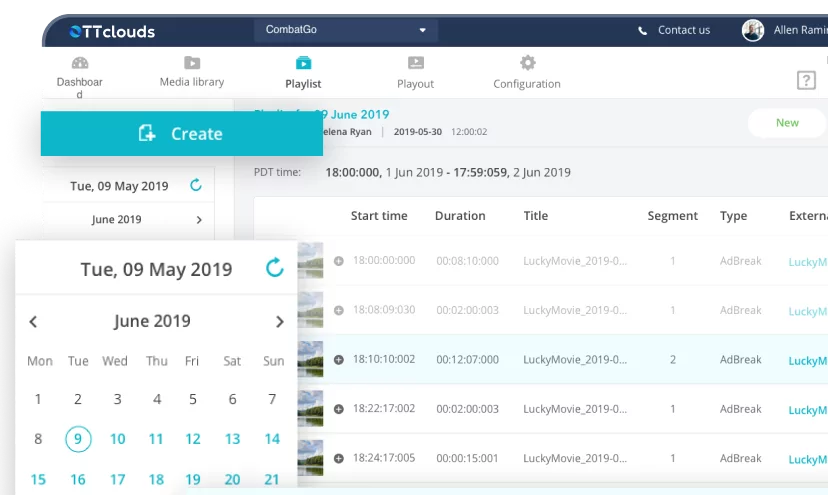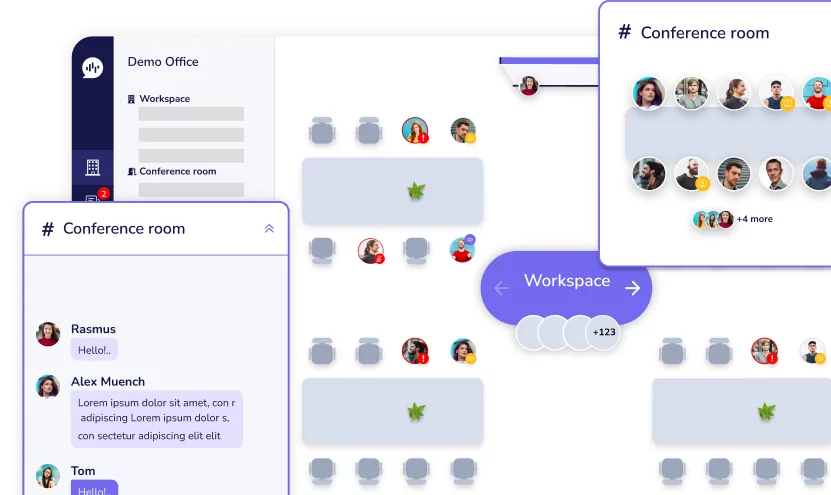Top features to consider when building a video call app
18/01/2023
1.59k
Video calling has been around for over a decade, and numerous people have adopted it for different reasons. For some, it’s a more animated way to interact with family and friends who they can’t easily meet physically. For others, it’s a more effective communication tool for clarity and flexibility during work.
The variety of use cases can leave teams conflicted about who to target and how to cater to them. Accordingly, let’s discuss some of the top features to consider when you decide to build a video call app:
Variable permissions
A good video call app strikes a decent balance between control and ease of access when setting up video calls. Whoever is creating a meeting should be able to restrict participation using features like meeting passcodes. However, they should also afford themselves and other participants some flexibility in how they invite others to join.

Source: Unsplash
Public links are already standard since they make this part easier. For example, you may invite some participants via email and send the link to someone via another chat app at the last minute if you realize their contributions will be relevant to the discussion.
There are other permission options like real-time additions where you allow someone to join an ongoing call by selecting them from a contact list.
Live transcription
Having video and audio makes comprehension easier, but not for everyone. Someone on the call may have a unique accent, and another may speak a different language. You could also have someone on the call with hearing problems or some other condition that makes it harder for them to understand what another participant is saying.
But with live captions, you can reduce instances of people repeating themselves and simplify real-time note-taking. Additionally, people won’t have to send many follow-up messages to revisit what was discussed and get clarity. Furthermore, you save time where transcriptions are needed, like when writing an article.
Whoever is writing only has to revisit short segments and points in the recordings to confirm facts like statistics, roadmap commitments, and such. So for people who publish interviews or work for content marketing blogs, live captions can give them a head start on their work.
Screen sharing and text chat
The reality is that being able to see and hear the person you’re talking to on a call isn’t the acme of communication. Depending on the topic/purpose of the call, one participant may need to pass on some other information, and the seemingly rudimental options like text chat may come in handy.
For instance, text chat can help you quickly spell out a word written quite differently from how it sounds. It also facilitates sharing links to other pertinent resources. However, video calls get more interesting when you bring in screen sharing.
This feature enables presentations as a participant shows others what’s on their screen. It simplifies conducting lessons using slides, and walkthroughs for product aspects like user interfaces. Screen sharing can also work for more casual purposes, like when you want to watch a movie or other video clips with friends.
Resolution options
720p is the base standard for video resolution for many video call apps. This is no surprise since many people are content if they can recognize the person in the video. Nevertheless, some situations may require higher resolutions.

Source: Unsplash
For example, having the clearest picture helps showcase elaborate animations and other motion graphics with complex effects. You may also need this to conduct product demonstrations or display detail-heavy elements like embroideries in textiles, physical circuit boards, and other intricately designed products.
That said, it’s nice if your video call app users can select a higher resolution like 1080p or more. Such high-quality video feeds are also cherished by large businesses that want to uphold their brand reputation when conducting live video events like Q&As, announcements, behind-the-scenes, conferences, and more.
Filters and effects
Video-based communication undoubtedly brings more possibilities for enhancing the information you’re conveying. One of the most basic ways to do this is through virtual backgrounds. These can help make your surroundings more visually appealing and offer a canvas for branding elements like logos.
Video call apps can even go further by offering other effects, filters, and Augmented Reality (AR) capabilities. These features make video calls fun by letting people express themselves differently, bringing out their lighter and goofy sides through masks, crowns, and more.
Moreover, such functionality isn’t only for bringing out the fun. It can also help people with conditions like photo-sensitive epilepsy, light sensitivity, and glare.
Security and privacy
Many people use video call apps for conversations they’d rather not have public. Whether it’s private family matters or trade secrets, your app should offer users several ways to protect their information. This also extends to user metadata and other call-related information that some third parties, like advertisers and other businesses would like.
Many video call apps already offer end-to-end encryption, but this isn’t enough, especially since hackers aren’t the only problem. Therefore, you should consider options like selective authorization of recording, screenshot alerts, viewing recordings only within the app, and access to others’ video feeds only when your video is on.

Source: Unsplash
These can help users control who gets to record what is said and keep track of these actions. Ultimately, there are fewer scenarios where confidential information makes it out of the group without people knowing who was responsible.
Wrapping Up
To create a video call app, you need robust technical infrastructure and a highly skilled team. Imagine a call with nearly 100 participants, many with virtual backgrounds, lots of motion, colors, dynamic lights, AR filters, multiple text messages, and screen sharing, all in high resolution. This would require considerable computational resources to keep the experience very good. There are also plenty of problem sources when delivering such a service, so you should constantly learn and adapt accordingly.
For professional assistance in gathering all the necessary resources for your video call app project, contact us for a free consultation.






















